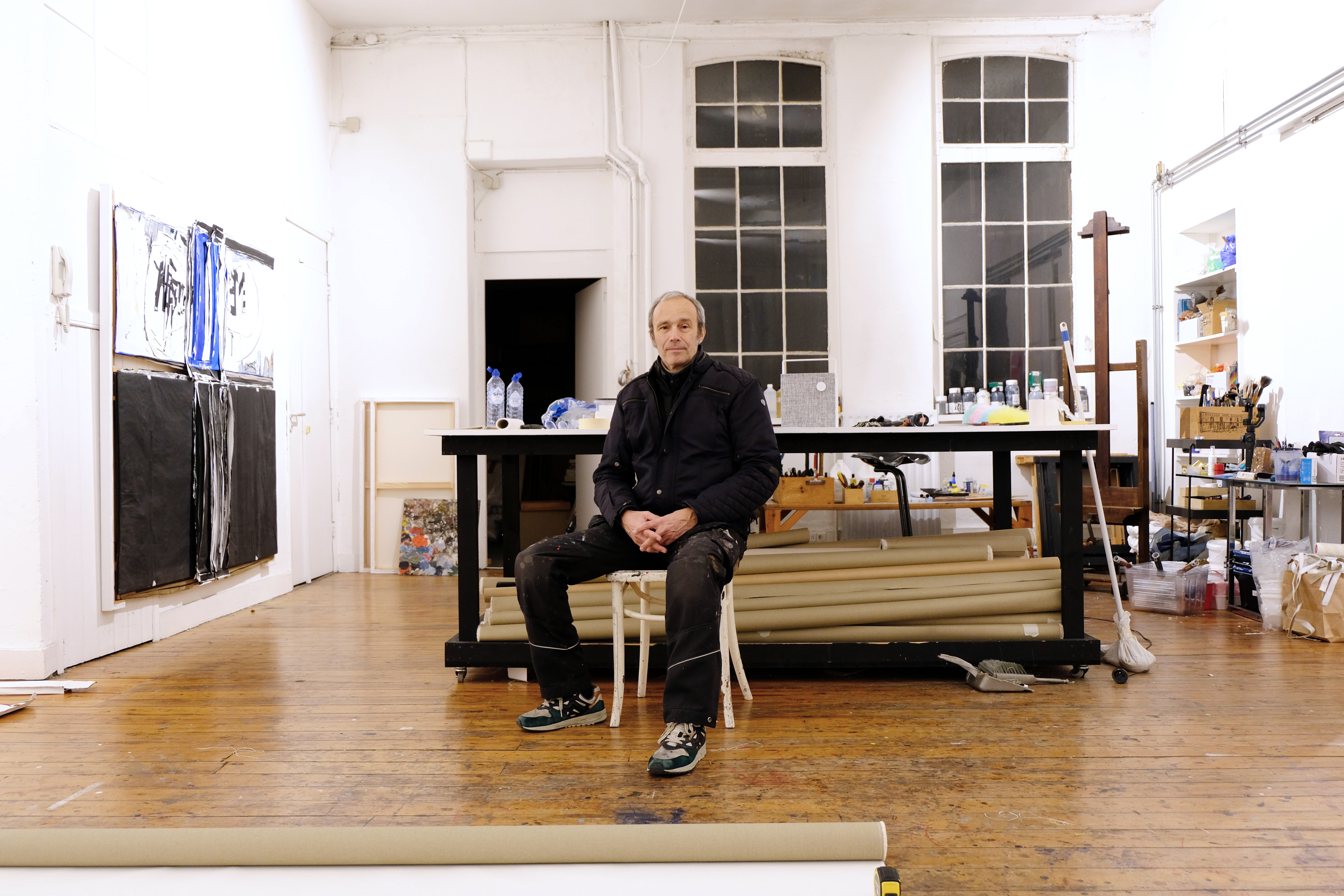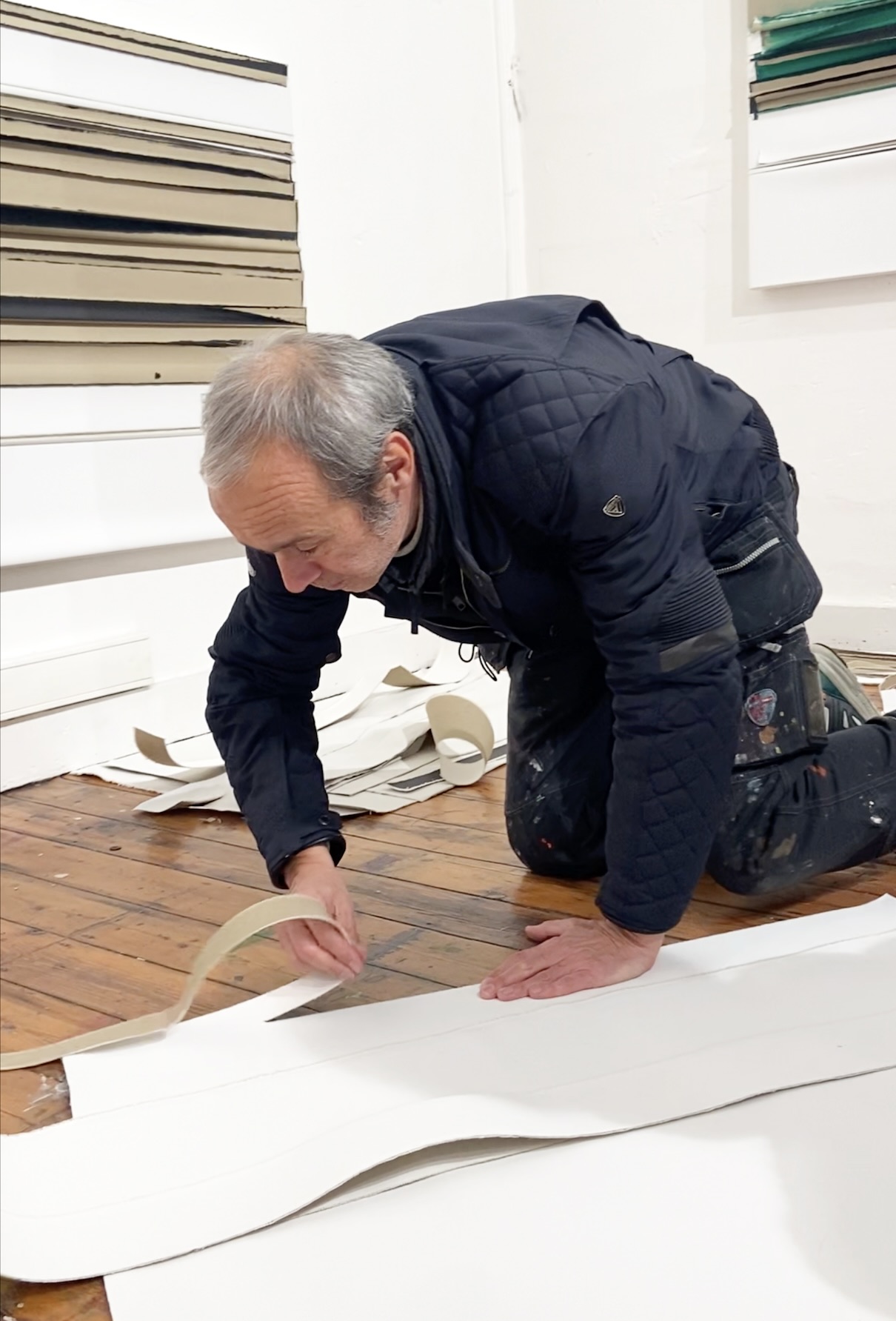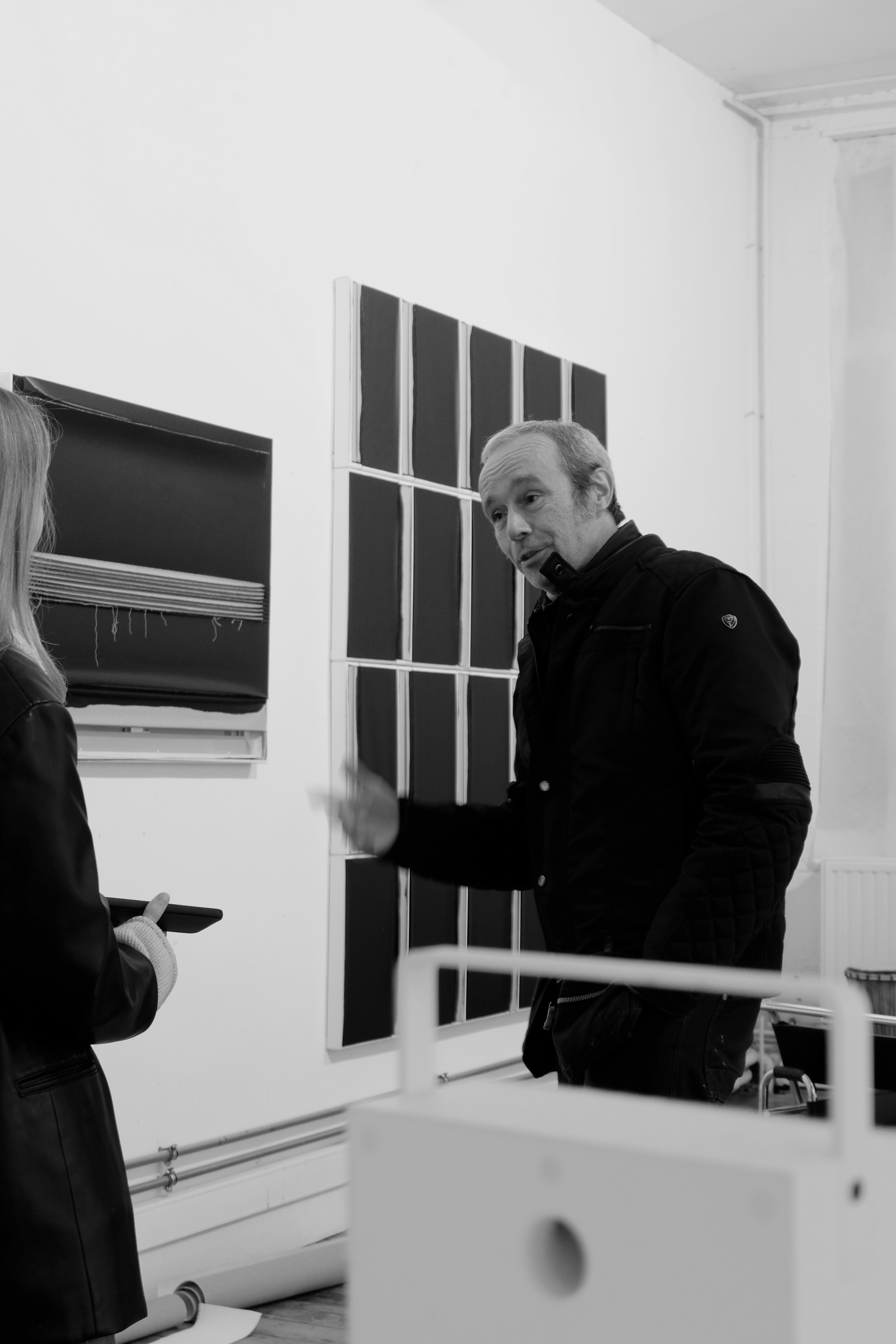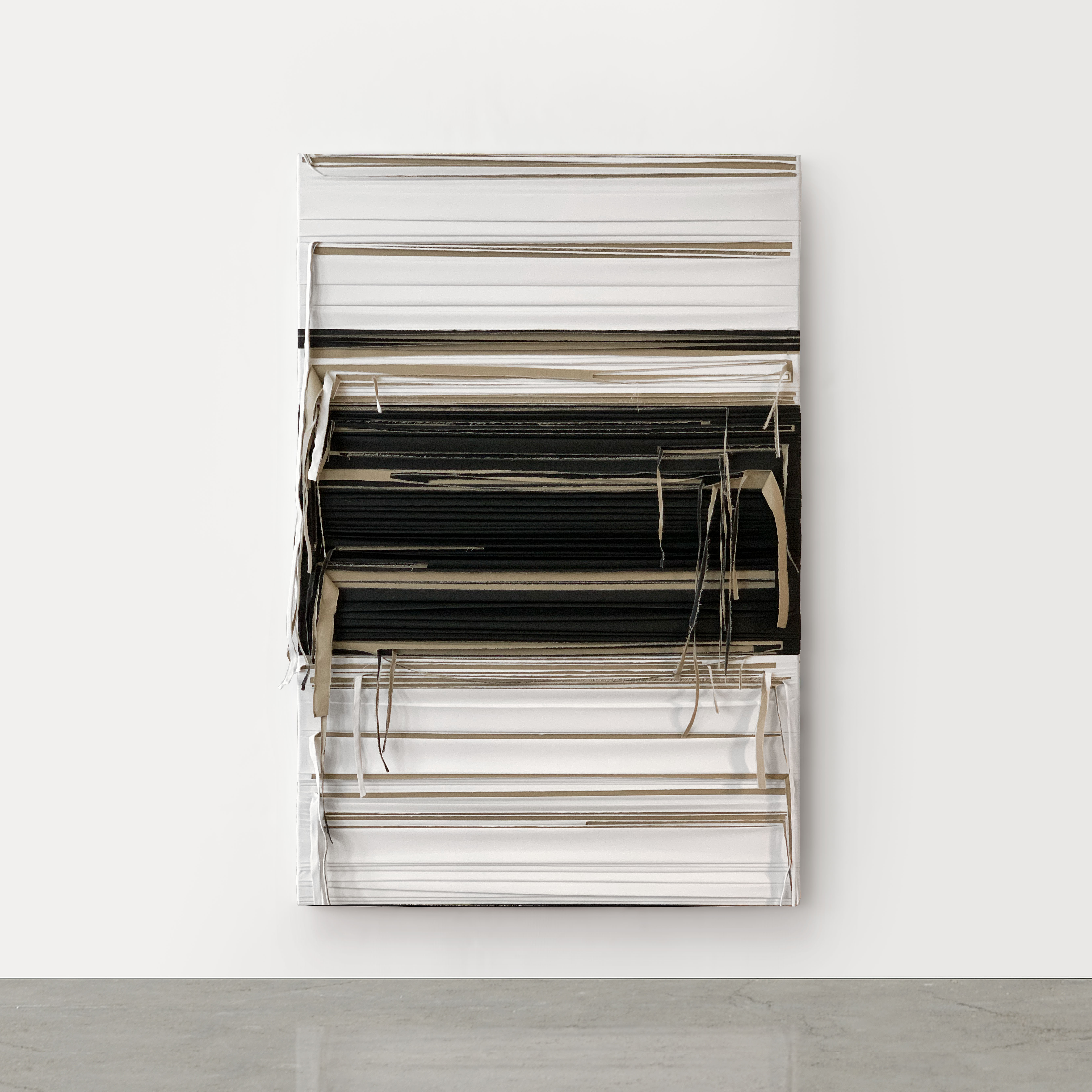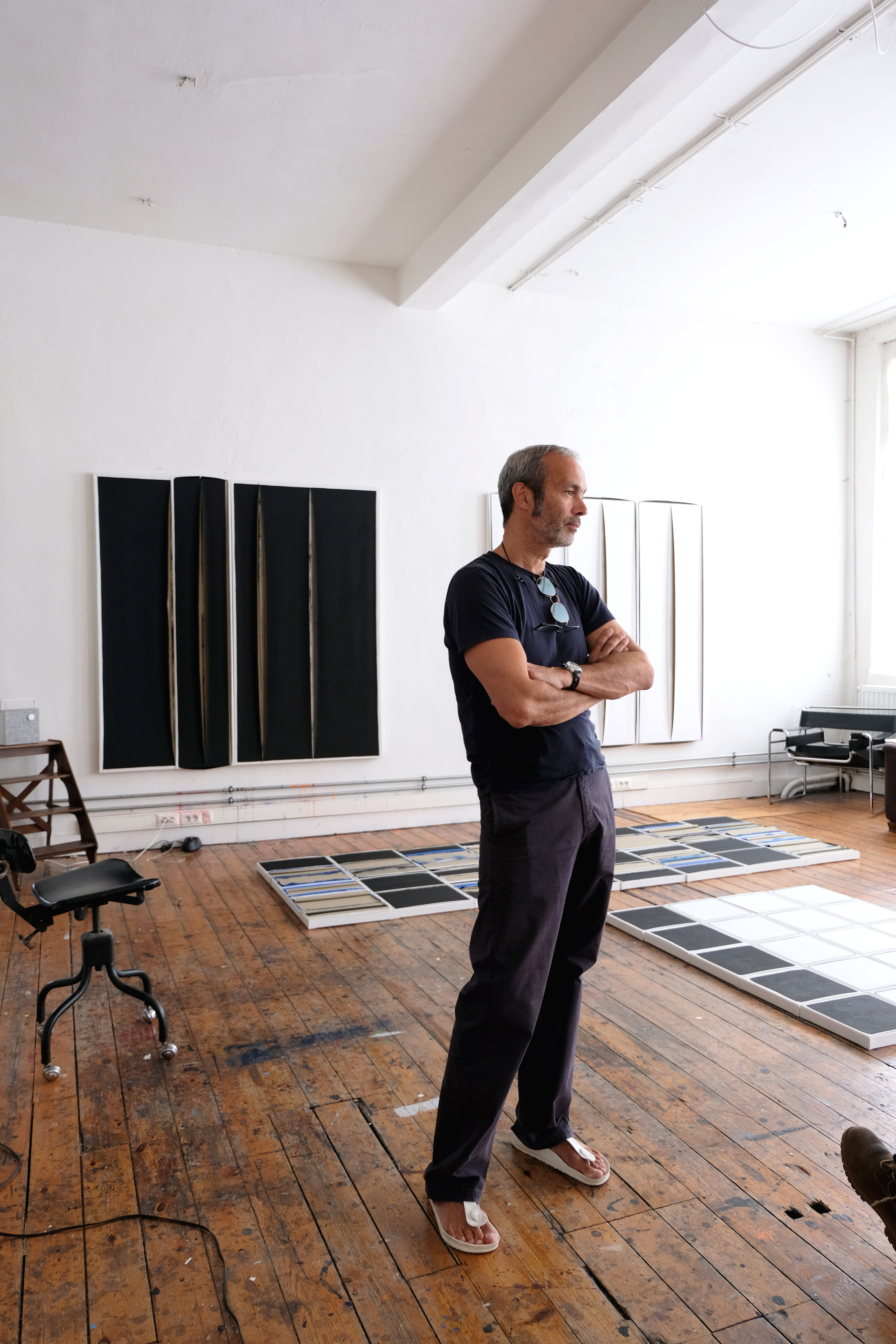
During a recent visit to the artist’s studio, we had the pleasure to talk with Jean-Philippe Duboscq (Belgium, 1960) and embark on a journey diving into his artistic universe, where every day is an exploration of creativity and experimentation. While walking through his workshop, he shares insights into his unconventional artistic process and the philosophy that underpins his work. We discover the latest series of works that are keeping him busy and he talks us through his creative process.
“I'm deeply immersed in several pieces at the moment”, he shares. “I prepare canvases by sanding them to enhance their absorbency, applying layers of paint, and tearing away the fabric to reveal what lies beneath. The paint seeps in, penetrating the layers hidden between the folds of the canvas, and then I rip it out. I paint imagining what's going on underneath the canvas, what’s going to happen when I tear, fold, and reopen the fabric.” It is ultimately a process of envisioning the unseen, anticipating the interplay of paint, folds, and tears.
Starting with a small cutter’s abscission, the artist proceeds to rip off the fabric by hand generating a strong noise, playing with the tension generated by the fold as he tears and manipulates the canvas, closing it again towards a different direction. By closing the folds with tension, the canvas evolves and deforms until it bends fully, creating a fold zone. This tension also reveals the reverse side of the fabric, leaving everything that happened underneath exposed. The order of paint application and canvas ripping may vary, or sometimes no paint is involved, only manual folding techniques. However, there is always a part torn off and a part cut out, leaving the inside of folds exposed and revealing the inside of the piece, just like unveiling something sacred that has always been there; present, but left unseen. Results are often unexpected as the paint flows between tears and folds, impregnating different layers of canvas, leading to discoveries underneath and allowing for improvisation within the process.
A multifaceted creative, Duboscq is not confined to the realm of visual art alone. He simultaneously pursued a career as a musician, initially crafting compositions for advertising agencies, yet always remaining true to his preferred genre: contemporary classical music. He was involved in collaborative endeavors such as performances and documentaries, and he has composed and performed pieces for musicians such as Pierre-Alain Volondat, winner of the Queen Elisabeth Competition.
Reflecting on the parallels between painting and musical performance, Duboscq explains that in both realms, there's an element of spontaneity, an irrepressible urge to respond to the moment. Whether on a canvas or in a melody, the process similarly delves into a dialogue with the unknown.
“When I perform, once I’ve started, there's no going back. The same happens when I start ripping out a canvas. If something doesn't work, I keep ripping it out until it does work underneath the fabric. I think about the work, and once I react everything goes very quickly. Only after I stop. The thinking comes first.”
Duboscq acknowledges that music, while he may not directly consider it an inspiration, holds a significant place in his life, sharing with his paintings the ability to capture the rhythms of a sequence. The common principle underlying both forms of creative expression lies in responding to an uncontrollable element. Overall, the artist paints, though what overflows beneath the different layers of canvas, during the opening and closing of folds, cannot be fully controlled. This unpredictability is what matters most to him.
Jean-Philippe Duboscq delved into the realm of folds from a very young age. By fourteen, he had already ventured into crafting pieces in bronze, and by sixteen, thanks to his sculpture teacher Félix Roulin, he enrolled at La Cambre, where his creative search evolved through figuration and abstraction. Influenced by his father, winner of the Belgian Art Prize and philosophy enthusiast, as well as Gilles Deleuze’s theory, Duboscq became fascinated with the concept of fold and used it as a recurring motif in his work.
Nowadays, the artist often experiments by taking existing elements and contemplating their reactions when placed in specific ways multiple times. Using Photoshop, he reproduces these elements (such as a painted panel), gaining a preliminary idea of how the piece will develop while being placed in a certain way while, at the same time, acknowledging that the final result will always remain uncertain. Here is where the link between the placement and repetition of a single element and a musical rhythm resides. An artwork is subject to multiple factors of variation and can change its rhythm while achieving different effects depending on how it is reconfigured. Even heat influences the evolving nature of his works, as temperature changes affect the tightness of his canvases, producing a kinetic effect and imparting a sense of life and movement to the pieces.
“I am not precisely interested in the way music inspires me or the relationship between music and rhythm, but in the question of how can we re-interpret one same element? Something that isn’t fixed, yet remains alive. It’s like literature. You never read a text the same way, because every time you reread literature you can do so in fifty different ways. Music acts similarly. You can write a musical piece in a certain way, but take Glenn Gould and Jörg Demus: they’ll never play the same piano piece the same way! This is why the “finished'' artwork doesn’t exist because, if it can always be reinterpreted and is subject to change, it will always evolve. An artwork is never finished because it’s always open to multiple reinterpretions and reconfigurations. The principle is precisely that, to not have a predetermined final result.”
For Duboscq, the fold embodies a space of possibility, a threshold between concealment and revelation. It is a metaphor for the inherent fragility and resilience of existence. Two folds can never be the same, and it is their imperfections and fragility that make a work alive. These are the only common factors that they share. According to Deleuze, the fold is a space without a door or a window that holds a vibrational room. “What I search for is something that takes a broken path. The fold opens and at the same time closes something else”, the artist explains.
Through the evolving landscape of his art, Jean-Philippe Duboscq invites us to embrace the beauty of uncertainty and to find true creativity in the perpetual quest for expression and discovery, instead of in a fixed destination. He reminds us that true artistry does not rely on the final product, but on the relentless pursuit of expression and discovery.
As our conversation draws to a close, the artist shares with us a compelling insight:
“My art is not static. On the contrary, it remains mobile and open to change. It is a journey, an exploration of the unknown. Art is not about knowing it all, but about embracing the unknown and letting it guide you. Art is not a painting by itself. It is what leads the painting to become what it is and about what you live while making a painting. It is about the process, the journey, the exploration of possibility. Art is not made to decorate, but to be lived. That is why my favourite work is always the one I currently work on. The constant thread in my work is the quest for something new, something that challenges and inspires me”.
